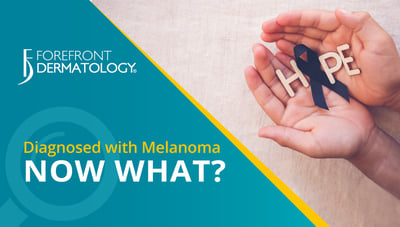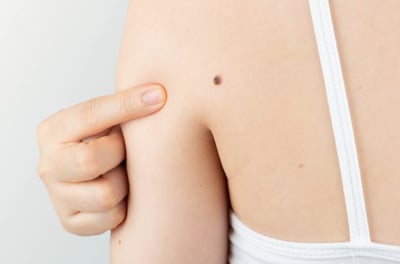
Melanoma is a highly malignant skin cancer that spreads rapidly and widely. While it primarily occurs in adults, an average of 300 children are diagnosed with pediatric melanoma in the United States every year. According to Dr. Sapna Patel Vaghani, a board-certified pediatric dermatologist with Premier Dermatology, “While melanoma is the least common type of skin cancer in adults, skin cancer in children is almost always melanoma.”
Research shows that pediatric melanoma has increased on average 2% per year since 1973, although its incidence seems to have decreased over the last few years. The biggest increase in recent decades has been in girls ages 15-19, likely due to increased use of tanning beds.
What causes skin cancer in a child?
“It is not known why children get melanoma early in life,” noted Dr. Vaghani. “In adults, melanoma is largely linked to years of UV exposure from the sun’s rays or from tanning beds, but in children that isn’t necessarily the case.”
Factors that may increase the chance of developing melanoma include:
- Fair skin, light hair and freckles
- Several large moles or many small moles
- A history of blistering sunburns or sunbathing, particularly in teenagers
- A history of using tanning beds, particular in teenagers
- Exposure to X-rays
- A family history of melanoma
Dr. Vaghani added that certain genetic conditions can increase a child’s risk of developing melanoma. These include:
- Xeroderma pigmentosum
- Werner syndrome
- A history of retinoblastoma
- Melanocytic nevi
What are the symptoms of skin cancer in a child?
“Melanoma looks different and may grow faster in children than it does in adults,” noted Dr. Vaghani. “It often does not meet the guidelines – commonly referred to as ABCD (Asymmetry, Border irregularity, Color variability, and Diameter > 6 mm) – used to detect melanoma in adults.” Instead, look for a mole that:
- Changes, grows quickly or doesn’t go away
- Is oddly-shaped or large
- Feels bumpy and sticks out from the skin around it
- Is whitish, yellowish or pink
- Is more than one color
- Itches or bleeds
Are there different types of pediatric melanoma?
Pediatric melanoma often forms as one of three different types of melanoma:
- Conventional melanoma (CM), or “adult-type melanoma”: The most like adult melanoma in terms of its causes and risk factors
- Spitzoid melanoma (SM): The most common type of melanoma in children. It often appears as a small collection of tissue that can be felt under the skin and is usually round, one color and found on the head, hands or legs.
- Melanoma that arises in a large congenital melanocytic nevus (CNM): A large, pigmented mole or birthmark that is present at birth.
What can I do to prevent skin cancer in my child?
The following steps have been recommended by the American Academy of Dermatology (AAD) and the Skin Cancer Foundation to help reduce the risk of sunburn and skin cancer:
- Minimize exposure to the sun at midday, between the hours of 10 a.m. and 4 p.m.
- Apply sunscreen with an SPF-30 or higher that protects against both UVA and UVB rays, to all areas of your child’s body (older than 6 months of age) that are exposed to the sun.
- Reapply sunscreen every two hours, even on cloudy days.
- Reapply after swimming or perspiring. Check the bottle for the length of time between reapplication. They can vary between every 40 or 80 minutes when spending time in the water.
- Make sure your child wears clothing that covers the body and shades the face. Hats should provide shade for both the face, ears, and back of the neck. Wearing sunglasses will reduce the amount of rays reaching the eye and protect the lids of the eyes, as well as the lens.
- Do not along teenagers to use tanning beds.
The American Academy of Pediatrics approves of the use of sunscreen on infants younger than 6 months old if adequate clothing and shade are not available. Parents should still try to avoid sun exposure and dress the infant in lightweight clothing that covers most surface areas of skin. However, parents may apply a minimal amount of sunscreen to the infant’s face and back of the hands.
Be Proactive
Remember, early detection saves lives. If you have any concern about a spot or mole on your child’s body it is best to schedule a skin cancer examination with your local board-certified dermatologist immediately. It may be nothing, or it may be something. Put your mind at ease, find a dermatologist near you today.





